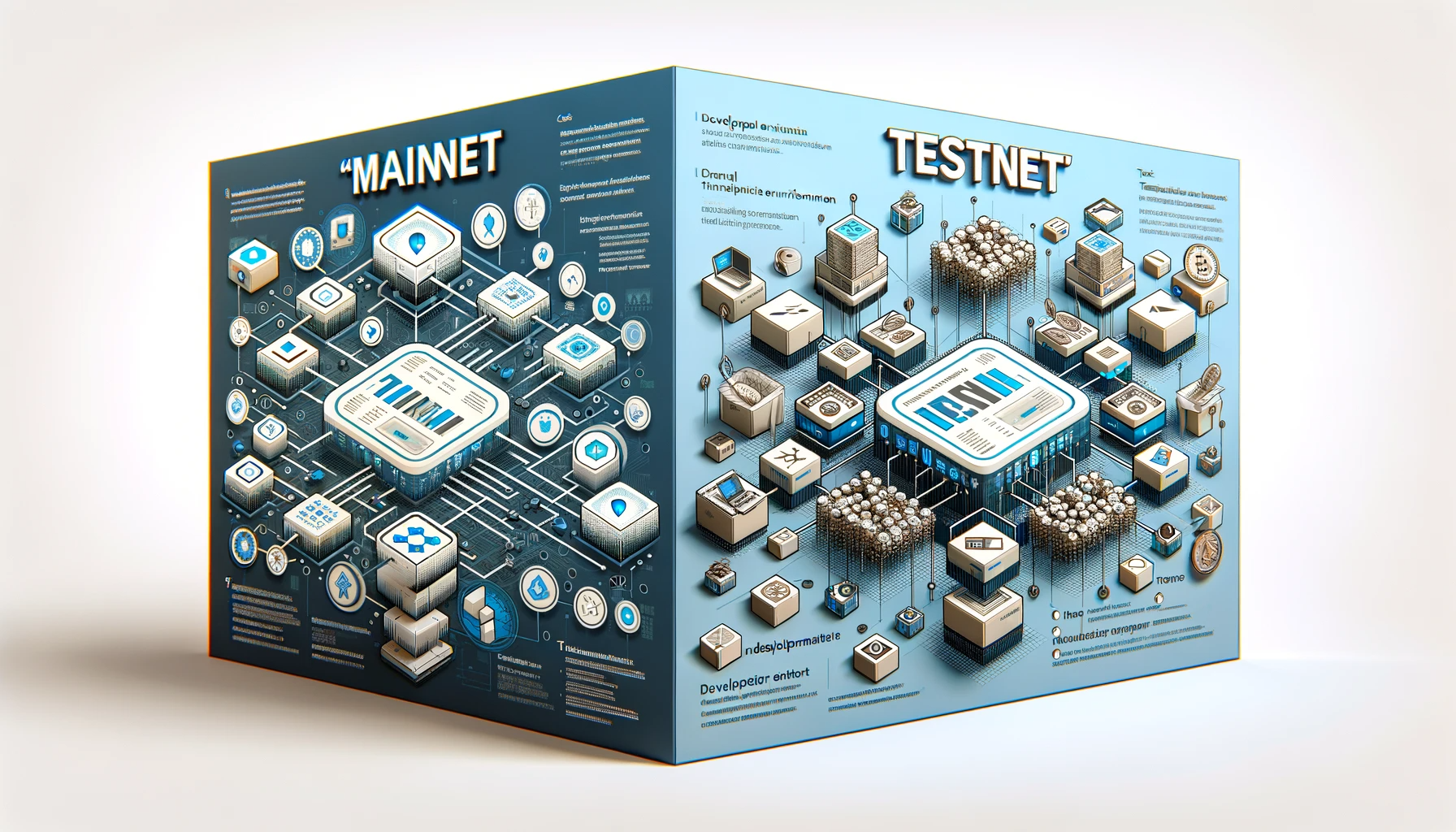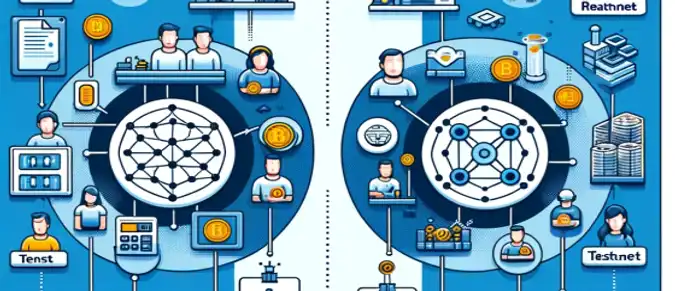Although interest in cryptocurrencies is growing among an increasing number of people, the world of blockchain remains relatively new and not fully explored for many. It's no surprise that this area is full of specialized terms. For example, terms like "Mainnet" and "Testnet" are often encountered in the world of cryptocurrencies and blockchain.

Features of Testnet
Testnet, or test network, as the name suggests, is a parallel network created specifically for developers to conduct tests. This network serves as an experimental platform, similar to a beta version in the world of cryptocurrency networks.
Testnet serves as an alternative blockchain network, exclusively for developers, allowing them to conduct experiments without risking real funds.
Test networks are largely similar to the main blockchain networks or main chains of cryptocurrencies. They operate on the same principle but have several significant differences.
In Testnet, cryptocurrencies do not have real value, unlike the main network, and vice versa.
For example, if you consider the main network of the cryptocurrency Tron, where all transactions and cryptocurrency circulation occur, its test network is separate and does not affect the main chain. It serves as a kind of "testing ground" for developers who can conduct any experiments with it to improve the coin and introduce new features into the main network.
- The test network provides an opportunity to safely test ideas separately from the main blockchain. This means that errors made during testing will not affect the stability of the main blockchain.
- Since the coins in the test network do not have real value, it eliminates the need to use real funds for testing blockchain applications.
- Setting up Testnet allows for full control over the blockchain, enabling developers to create their own nodes at their discretion.
Test networks represent simplified alternative blockchains focused on development. For this reason, the complexity of mining in Testnet is significantly lower, and mining in such networks is simpler. Developers can generate the necessary coins in their test network without competition.
Since test networks are separate blockchains, the wallet addresses in them usually differ from the addresses in the main network. For example, in Ripple, test network addresses start with "r", while in Cardano, there are no differences between test and main network addresses.
How Mainnet Works
Mainnet is the complete opposite of Testnet.
Mainnet, or the main network, is the primary blockchain network of a cryptocurrency. For instance, when referring to Ethereum Mainnet, it implies working with the actual Ethereum blockchain.
Unlike Testnet, which serves as an open test network, Mainnet represents the primary and active blockchain. In this network, cryptocurrency coins have real economic value.
Due to the real economic value of coins, conducting tests and experiments on Mainnet can be very costly. For this reason, Testnet is used to conduct trials using fictitious coins that have no value outside the test network.
Developers first implement new features in Testnet, and then, after thorough testing, transfer them to Mainnet. Testnet provides an opportunity to test new features, identify and fix bugs before their implementation in the main network.
Lately, many cryptocurrencies begin their existence precisely at the testing stage. This allows both developers and cryptocurrency enthusiasts to thoroughly study the new currency.
Once developers are confident in the stability and readiness of their product, they release it to the general public, presenting it as the main network or updating an existing network with new features already tested in Testnet.

Difference between Mainnet and Testnet
Mainnet represents the main, functioning version of a project's blockchain, where user transactions are recorded. It is considered a completed and fully developed product. Testnets, on the other hand, are not designed for widespread use by the public.
Understanding the differences between Testnet and Mainnet is key. The main examples are provided in the table:
| Criterion | Mainnet | Testnet |
|---|---|---|
| Description | Main cryptocurrency network | Test network for developers |
| Coin Value | Coins have real economic value | Coins do not have financial value |
| Coin Compatibility | Coins cannot be transferred to Testnet | Coins cannot be transferred to Mainnet |
| Mining Difficulty | High difficulty | Provides ease of setting up nodes and low mining difficulty |
| Rules and Restrictions | Strict rules due to the real value of coins | More opportunities for experiments and testing |
For example, in the Bitcoin test network, there is no IsStandard check, which allows for testing non-standard transactions.
Also, the genesis block for each network is unique, emphasizing the fact that, despite similar protocols, they represent different blockchains. Ultimately, Testnet has fewer transactions compared to Mainnet, affecting their relative sizes - Testnet is usually smaller than Mainnet.
In testnets, which serve as platforms for testing and development, users have the opportunity to perform various test tasks for applications. This can include testing functionalities, identifying bugs, or assessing performance. For their activity and contribution to the improvement of applications, users can receive rewards, often in the form of tokens or other incentives provided by developers. A similar reward system can also be implemented in mainnets, where users can likewise earn rewards for participating in the ecosystem, completing tasks, or contributing to the network's stability and security.
Testnet and Mainnet are key concepts in the world of blockchain, often encountered in discussions and analysis.




